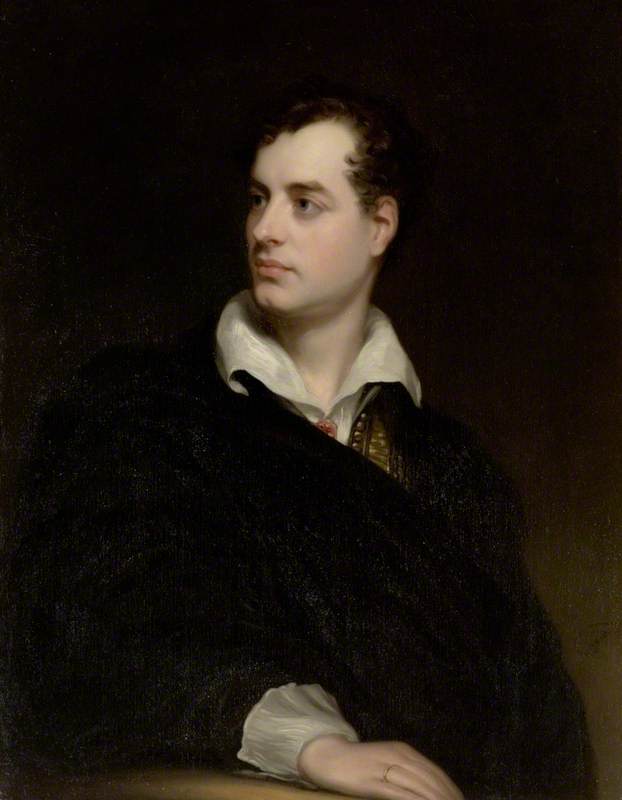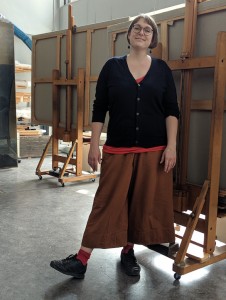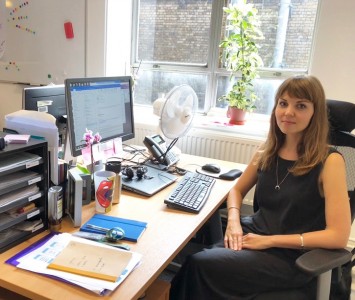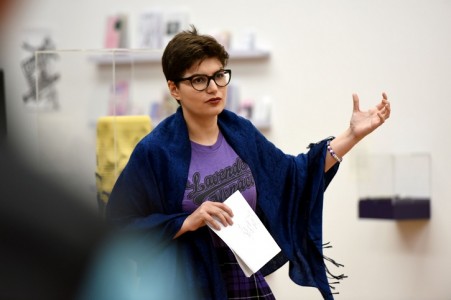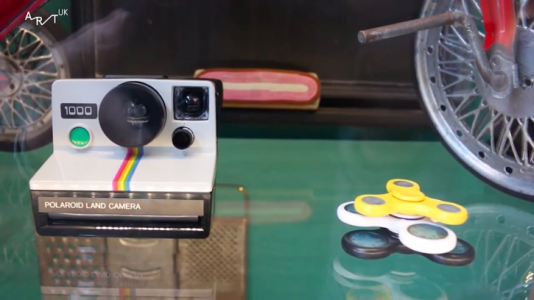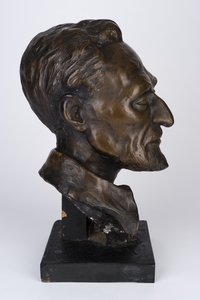For Art UK's 'Being...' series, we take a look at a day in the life of a professional working in the arts, heritage or museum sector.
Simon Brown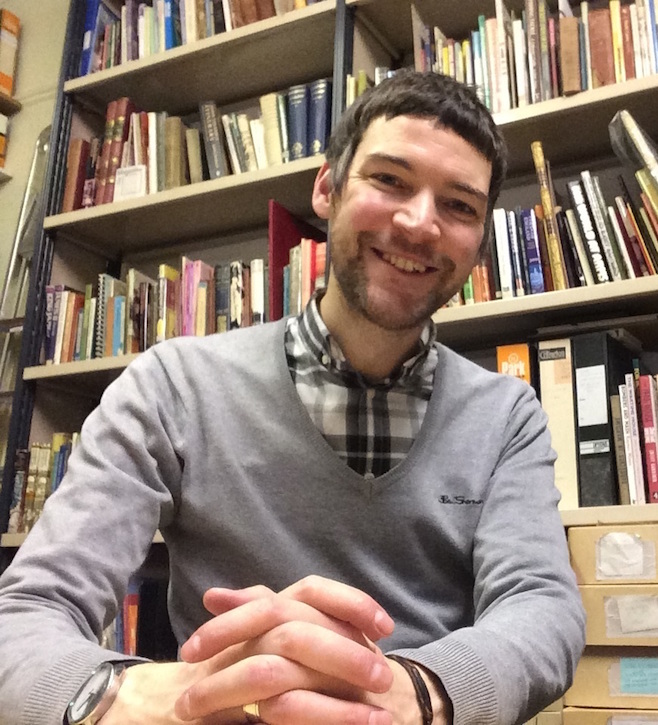
What's your role?
I work in two part-time jobs in the beautiful city of Nottingham. For half of the week, I am a curator at Newstead Abbey, the ancestral home of the great athlete, lover, political firebrand and occasional writer Lord Byron. I'm responsible for our collection, and its display and use by the public.
The other half of my week is spent as a project curator at the National Justice Museum, which is based in Nottingham's historic county gaol and courthouse. Our purpose is to encourage our visitors to be active citizens, through engagement with justice and the law. I help to deliver our artistic programme, and make connections to help embed the museum in the life of the city.
Newstead Abbey
National Justice Museum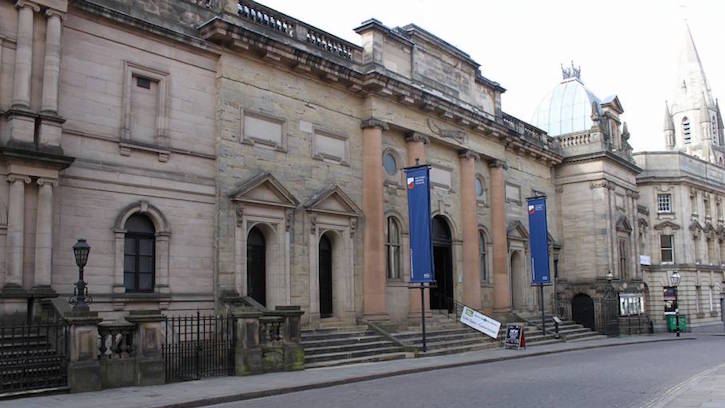
What's your morning routine?
I live just south of the city over Trent Bridge. It's a beautiful, almost semi-rural setting, yet I'm only 15 minutes from the city centre. It sounds peaceful until you consider I have two boys who are 8 and 5, so there's zero chance of a peaceful morning. Thankfully my wife is able to sort them out for school as I leave very early!
What's your journey to work like?
The National Justice Museum is on High Pavement in Nottingham city centre, so I take the short journey into town on the bus. The journey is through one of the loveliest parts of town, around Trent Bridge. It's one of the most concentrated areas for sport in the country, with the world-famous cricket ground, Nottingham's two football clubs and various water sports clubs all within touching distance.
If I'm out early enough I'll sometimes have a bacon butty in a café overlooking the river. Nottingham has a uniquely peaceful atmosphere, and it feels particularly strong here.
My journey to Newstead is a little more involved, as it is about 10 miles north of the city. I don't drive, so I catch a train to Newstead Village station. It's then a walk of about a mile and a half through the grounds to get to the Abbey. Newstead is in an idyllic wooded setting alongside the River Leen – it is essentially in the middle of Sherwood Forest. It feels like another world, and it is a special privilege to walk through it at the break of morning (although not so much in blowing January gales).
National Justice Museum entrance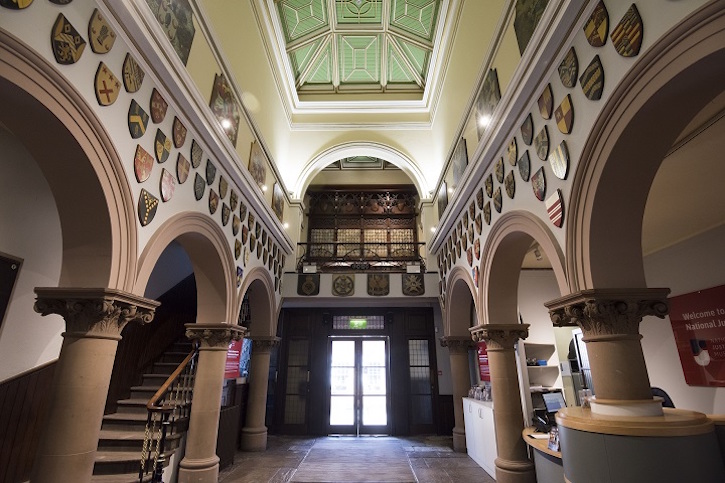
What's a typical morning at work for you?
The National Justice Museum is a wonderfully bustling city-centre museum. Most mornings my colleagues in the education programme are preparing to welcome one of the many school groups that travel from all over the country to visit us.
My own morning might be taken up with planning our workshop programme, or gathering responses to our collection taken through our co-production methods. We have established a project lab in the museum – a space for the public to interact with us and each other, to share ideas around the collection and our themes. We play with ideas for display and interpretation, and invite contributions from our visitors. I'm always excited to see what they come back with, as there is always something surprising and enlightening.
Newstead is a contrast in many ways, not least because we are in a rural setting. The activity we see most in the mornings are from visitors enjoying our gardens before the house opens at midday. In the house we are in the process of planning a complete reinterpretation, so my morning will likely be filled with gathering perspectives and research on our collection, and in particular the life of Lord Byron. He is such a remarkable figure, that a single aspect of his life can be (and often is) interpreted in myriad ways. My task is to make that compelling and engaging for the public.
Simon at Newstead Abbey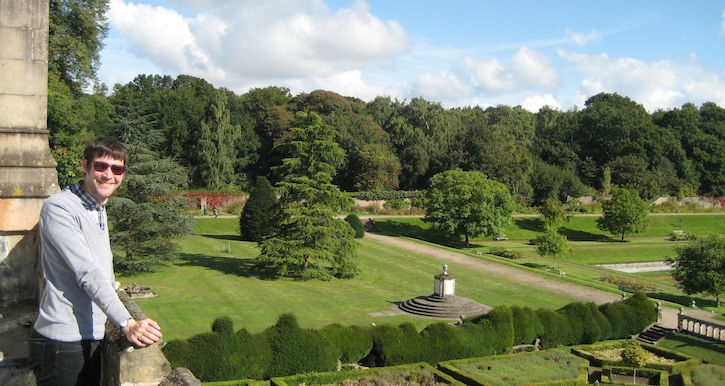
What's for lunch?
Two workplaces means two cafés to enjoy! The café at Newstead is always bustling with people, who may be eating before they come and see the house, or are resting after a morning stroll around the gardens. I'll often get something here to take to the Japanese Garden at the far end of the grounds. It's an idyllic place and important for me to get away from the indoors. Taking advantage of this physical and emotional breathing space really does help me do my job better.
Our café at the National Justice Museum is operated by a charity called Pulp Friction, who offer volunteering opportunities for young adults with learning disabilities. The people that benefit from those opportunities can then take that experience into their further lives. In supporting remarkable organisations such as this, the museum is living our values of engaging the public with justice.
Newstead Abbey and grounds
What's a typical afternoon like?
The co-production processes we are using at the National Justice Museum help us to gather a huge volume of responses to a single theme or object. These responses all inform what we do next, be it in the display of one object, or concepts for our exhibition programme.
One of the most enjoyable parts of this is through object walks – literally taking objects outside the museum to ask people for their feelings about them. I've taken historic prison keys to key cutting shops, police uniform to tattoo artists and truncheons and handcuffs to radical bookshops. It's fascinating to see how the public responds, people are always delighted to be approached.
My work at Newstead will often take me to meetings with the huge array of people with a personal and academic interest in our place, or in the work of Lord Byron. His life touched upon so many universal themes: the power of storytelling, travel, art, dysfunctional relationships, sexuality, politics, attitudes to disability, celebrity and many many others. His life is full of interesting stories and points of reference for us all.
Throughout my own upbringing, I didn't feel like historic houses and museums were for people like me – however that could be defined. I thought they were just for posh people, frankly. As I've grown and worked in these wonderful places, I've discovered just how wrong that perception is. But it is one that persists.
My motivation to do this job is to show how our shared heritage is for all of us. Lord Byron's life is a wonderful story for us all to engage with, particularly through such a beautiful place as Newstead. And we are all affected by justice and the law – the National Justice Museum is a hugely ambitious institution through which to engage with that.
National Justice Museum in Nottingham, refurbished by J. Tomlinson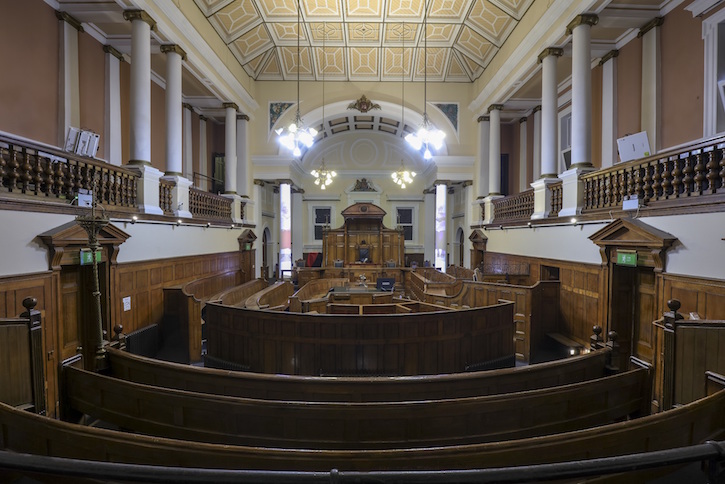
What do you do after work?
Of course, time after work allows me to spend time with my family, which is far easier than it is first thing in the morning! It's lovely to see my children's sense of themselves develop as they get older. We'll often play (or watch) football together.
One of my other responsibilities is that I am on the board of the Museums Association, the largest membership body for people working in museums in the UK. It is in the evening that I can undertake my work for the MA. This includes all the expected governance and scrutiny procedures, but also the chance to look over and take stock of the remarkably wide range of work that the MA does – advocacy, publishing the monthly journal, supporting CPD for our members, and a great deal else. The MA does a huge amount of work, with a relatively small and hugely dedicated group of staff. I am learning from them every day.
Simon Brown, Curator at Newstead Abbey, and Project Curator at the National Justice Museum
Do you work in the arts, heritage or museum sector? Would you be kind enough to share an example of your working day for our 'Being...' series? Please get in touch with Art UK at pitches@artuk.org as we'd love to hear from you.
